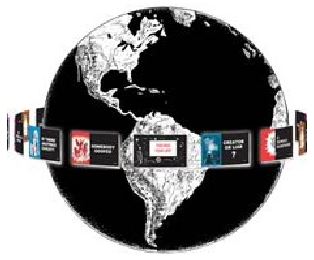How to Test a New Bible —Before You Buy
When the bookstore clerk hands you a new Bible to purchase what should you look for? Normally we just assume the text is okay and focus on the helps, price or binding. Does it have a concordance? Does it have center references? Is it highlighted for specific study courses? Is it designed for a specific purpose such as a kid`s, teen`s, soul winner`s, or study Bible? Is it in my price range?
Today, that`s not enough. Just because it is the same Bible as what my pastor uses, it matches my Sunday school lessons, or it`s recommended by my denomination, doesn`t make it a safe book to really know what God said.
Modern technology has given us a much deeper look into the history of the Bible texts behind that Bible handed to you over the bookstore counter. It`s not enough to just "trust the scholars" and take the Bible home if the price is right.
Here is what else you should ask before you purchase:
1.) Is Acts 8:37 missing? (This is a handy verse to show a Roman Catholic that infant baptism won`t work.)
2.) Is there a footnote suggesting that Mark 16:9-20 is not in the "oldest and best" manuscripts? (Then how can I know if Jesus really rose from the dead?)
3.) Does 1 Cor. 1:18 tell you that you are just "being saved" or safely saved?
4.) Does it have some strange books like Tobit, Maccabees, Esdras, Shepherd of Hermas, etc?
5.) Does John 3:16 show that Jesus was just an "only Son" or the only "begotten" Son? (If "begotten" is not there, how was Jesus different from the "sons of God" in John 1:12?)
6.) Is Jesus in Acts 3:26 a servant instead of a Son?
7.) Is the path beyond the narrow gate in Matt 7:14 a difficult path instead of just a narrow one?
8.) Does 1 John 5:7 omit the Trinity?
If yes is the answer to any of these questions, that Bible has a questionable history. Creators of that translation have used source documents (manuscripts) that contain contradictions and omissions.
Sometimes we act like Matthew and John just wrote out the Bible in English. Fact is, there is a lot of history in the 2000 years since Jesus walked in Galilee. Several languages are involved over the centuries.
When we buy a used car, we want to know the history. If the original owner was a "little old lady from Pasadena," we trust the quality more than if it was owned by a hotrod enthusiast. Why should we not also be interested in the history of our Bible?
Researcher David W. Daniels has spent several years using current investigative tools to dig out new information about the history of our Bibles. One finding is that there are two streams of manuscripts in Bible history. And they are hugely different.
One has two thousand years of a steady, traceable series of copies of the Bible in well-known, historical languages. The other comes from the hands of questionable characters with no verifiable history before 1800.
Daniels published a book, Look What`s Missing, in 2013 listing over 240 missing words and verses in the modern Bibles. Another Daniels book, Did the Catholic Church Give us the Bible?, lists hundreds of problems with the two streams of Bible history.
Anyone who does not perform "due diligence" before buying the next Bible risks reading a book that shifts meanings away from God`s true word.
Any pastor or teacher who does not research this issue also risks guiding people to a defective book gutted of the true power of God`s word.
Other resources by Daniels include dozens of YouTube videos and other books called Why They Changed the Bible, (2014) and Did Jesus Use the Septuagint (2017), explaining the details of this danger.
- See more articles on related topics:
- Bible Versions
- Changes in Bible Versions
- Modern Versions
Other Articles from January/February 2017:
More on Bible Versions:
Products of Interest:
-

Look What's Missing!
256 pages
For years, publishers have been removing words, and even whole verses, from modern Bibles. What's missing from your Bible? Take a look! -

Why They Changed the Bible
228 pages
See who is behind the gradual changing of modern Bibles. There’s no guessing about what these people believe. They will tell you, in their own words! -

If The Foundations Be Destroyed
98 pages
What does the NIV have against Jesus? Is your Bible missing important verses and doctrines? If it is an New International Version there's a lot missing! -

Did the Catholic Church Give Us the Bible?
208 pages
The Bible has two histories. One is of God preserving His words through His people. The other is of the devil using Roman Catholic "scholars" to pervert God’s words and give us corrupt modern Bibles.



